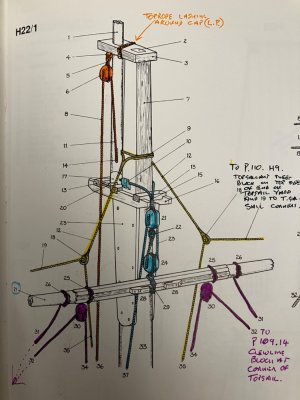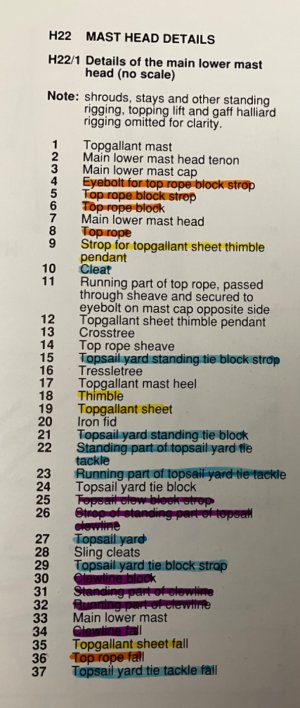Mast Carpentry
I've been rather distracted with family matters this weekend but Sunday evening has been quiet. It was also raining just enough for Buddy, my dog, to decline a walk so I put on my carpenter's apron and worked on the cheeks, crosstrees, cap, topmast* and button, all slightly complicated by that pesky rearward rake.
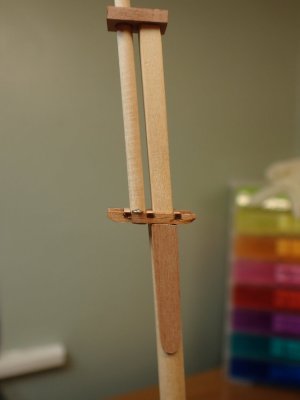
The cap and crosstrees are parallel but I apparently couldn't take a straight photo. I'm very tired. I see that the cap needs its edges rounding ever so slightly.
Both of the tapered sections of the mainmast show spiral rings from my over enthusiastic sanding. Next time I'll go slower with a finer grit. I've sanded longitudinally until I can't feel anything but there's still something visible. Maybe it will disappear under sealer, he said optimistically, while knowing thet Sod's Law says applying sealer will make the marks worse. Oh well, let's call them adze marks and forgeddaboudid!
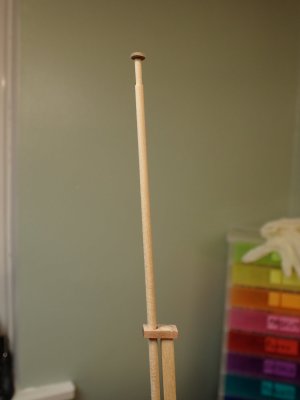
I raked the button as well as I could and will tidy further when the glue has properly set. Tilted forwards like that it looks rather rakish!

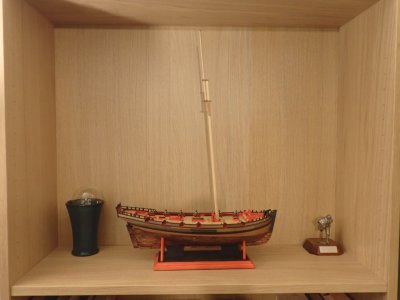
Alert is now too tall for her previous berth and so has graduated to her final resting place. If she's good enough when finished I might buy some glass doors to keep the dust off, but I'd rather spend the money on a new and bigger bench.
And that's it. I'm bored now so I'm going.






